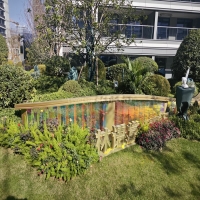Welcome to the website for landscape facilities products and knowledge.
What is the process for ensuring the bin’s long-term sustainability in diverse environments?
Ensuring the long-term sustainability of bins in diverse environments requires a comprehensive approach that addresses material durability, environmental adaptability, and user behavior. Here’s a breakdown of the key steps:
1. Material Selection: Opt for high-quality, weather-resistant materials like recycled plastics, stainless steel, or coated metals to withstand harsh conditions. These materials should resist corrosion, UV damage, and extreme temperatures.
2. Design for Durability: Incorporate robust construction with reinforced seams, sturdy lids, and ergonomic handles. Modular designs allow for easy repairs or part replacements, extending the bin’s lifespan.
3. Environmental Adaptation: Customize bins for specific climates—e.g., rust-proof coatings for coastal areas or insulated liners for freezing temperatures. Proper ventilation prevents odor buildup in humid regions.
4. User Engagement: Educate communities on proper waste segregation and bin maintenance. Clear labeling and color-coding encourage correct usage, reducing contamination and wear.
5. Regular Maintenance: Implement scheduled cleaning and inspection routines to address minor damages early. Partner with local authorities or waste management services for timely repairs.
6. Sustainability Practices: Integrate bins into broader recycling programs, ensuring they align with circular economy principles. Use solar-powered compactors or smart sensors to optimize collection efficiency.
By combining these strategies, bins can remain functional and eco-friendly across varied settings, contributing to sustainable waste management globally.
Related search:

Recommendation
Metal and acrylic color-changing combined curtain wall for large-scale public landscape facilities